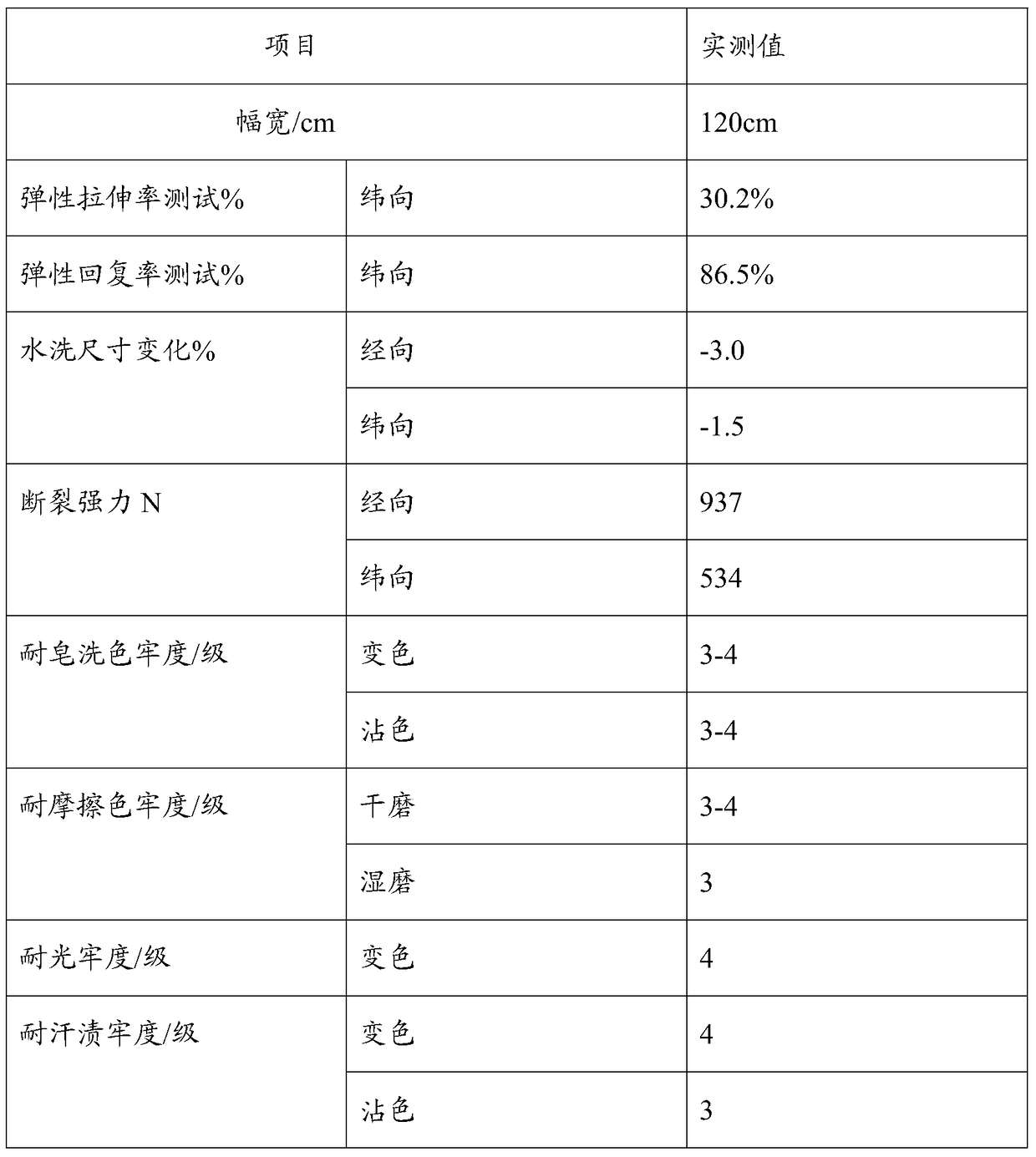A dyeing and finishing process of cotton viscose and ammonia multi-fiber elastic fabric treated with biological enzyme at low temperature
A low-temperature treatment and bio-enzyme technology, applied in the field of textile printing and dyeing, can solve problems such as creases and streaks, complex dyeing and finishing process, and fabric structure deformation, so as to achieve full dyeing quality, optimize dyeing process parameters, and benefit The effect of smooth production
- Summary
- Abstract
- Description
- Claims
- Application Information
AI Technical Summary
Problems solved by technology
Method used
Image
Examples
Embodiment 1
[0055] A kind of dyeing and finishing process of the cotton viscose ammonia multi-fiber elastic fabric that utilizes biological enzyme low-temperature treatment described in this embodiment, the process includes pretreatment process, dyeing process and post-finishing process;
[0056] Described pretreatment process comprises the following steps:
[0057] (1) Enzyme rolling process
[0058] Prepare the treatment solution: add 450L of water, stop heating after raising the temperature to 50°C, add penetrant, and then add biological desizing enzyme, activate for 3 minutes before use, the concentration of penetrant is 5g / L, and the concentration of biological desizing enzyme is 20g / L; The biological desizing enzyme is selected from 2000L of Novozymes, and the penetrant is selected from TA-1 of Binzhou Chenguang Chemical Industry;
[0059] Rolling with enzyme rolling, fix the second fabric guide roller on the 1# groove of the rolling, so that no wrinkles can be formed, adjust the ...
Embodiment 2
[0090] A kind of dyeing and finishing process of the cotton viscose ammonia multi-fiber elastic fabric that utilizes biological enzyme low-temperature treatment described in this embodiment, the process includes pretreatment process, dyeing process and post-finishing process;
[0091] Described pretreatment process comprises the following steps:
[0092] (1) Enzyme rolling process
[0093] Prepare the treatment solution: add 450L of water, stop heating after raising the temperature to 50°C, add penetrant, then add biological desizing enzyme, activate for 3 minutes before use, the concentration of penetrant is 6g / L, and the concentration of biological desizing enzyme is 22g / L;
[0094] Rolling with enzyme, fix the second cloth guide roller on the 1# groove of the rolling, so that no wrinkles can be formed, adjust the angle between the cloth drop frame and the rolling roller, so that no wrinkles can be formed, pile up at room temperature for 15 hours, wash with water, 100 Und...
Embodiment 3
[0124] A kind of dyeing and finishing process of the cotton viscose ammonia multi-fiber elastic fabric that utilizes biological enzyme low-temperature treatment described in this embodiment, the process includes pretreatment process, dyeing process and post-finishing process;
[0125] Described pretreatment process comprises the following steps:
[0126] (1) Enzyme rolling process
[0127] Prepare treatment solution: add 450L of water, stop heating after raising the temperature to 50°C, add penetrant, and then add biological desizing enzyme, activate for 3 minutes before use, wherein the concentration of penetrant is 4.5g / L, and the concentration of biological desizing enzyme is 21g / L;
[0128] Rolling with enzyme, fix the second cloth guide roller on the 1# groove of the rolling, no creases, adjust the angle between the cloth drop frame and the rolling roller, so that the creases cannot be rubbed, stack at room temperature for 13 hours, wash with water, 95 Under the conditi...
PUM
| Property | Measurement | Unit |
|---|---|---|
| concentration | aaaaa | aaaaa |
Abstract
Description
Claims
Application Information
 Login to View More
Login to View More - R&D Engineer
- R&D Manager
- IP Professional
- Industry Leading Data Capabilities
- Powerful AI technology
- Patent DNA Extraction
Browse by: Latest US Patents, China's latest patents, Technical Efficacy Thesaurus, Application Domain, Technology Topic, Popular Technical Reports.
© 2024 PatSnap. All rights reserved.Legal|Privacy policy|Modern Slavery Act Transparency Statement|Sitemap|About US| Contact US: help@patsnap.com








